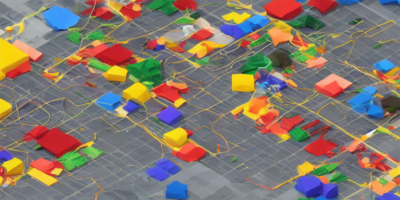Deep neural networks have been incredibly successful in a wide range of applications, including image classification, natural language processing, and speech recognition. However, these models are not immune to the problems of noisy data, which can significantly impact their performance. In this article, we present a simple yet powerful approach to noise-robust training of deep neural networks, called Robust Learning for Variational Inference (RLVI). Our method leverages the principles of variational inference and expectation maximization to learn a probability distribution over the weights of the network that is robust to noisy data.
Background
Deep learning algorithms are typically trained using stochastic gradient descent (SGD) or its variants, which rely on the objective function being differentiable and smooth. However, in many applications, the data used for training may contain noise, which can lead to suboptimal performance or even failure of the model to converge. To address this issue, researchers have proposed various regularization techniques, such as dropout, weight decay, or adversarial training, but these methods can be computationally expensive and may not always lead to robustness gains.
RLVI: A Simple Approach to Noise-Robust Training
RLVI is based on the idea of learning a probability distribution over the weights of the network that is robust to noisy data. The proposed method uses a combination of variational inference and expectation maximization to minimize the negative log likelihood of the data under the probabilistic model. By doing so, RLVI can learn a distribution over the weights that reflects the uncertainty in the data, leading to improved robustness against noise.
The key insight of RLVI is that the objective function of the network can be represented as a function of both the parameters of the network and the probability distribution over the noisy data. By minimizing the negative log likelihood of the data under this probabilistic model, RLVI can learn a robust solution that is less sensitive to the noise in the data.
How RLVI Works
RLVI works by iteratively updating the parameters of the network and the probability distribution over the noisy data using an expectation-maximization (EM) algorithm. In each iteration, RLVI first computes the log likelihood of the data under the probabilistic model, and then updates the parameters of the network and the probability distribution using gradient ascent. This process is repeated until convergence.
To understand how RLVI works in more detail, let’s consider an example of image classification on the CIFAR-10 dataset with randomly flipped labels (i.e., noise). In this case, RLVI learns a probability distribution over the weights of the network that is robust to the noisy labels, leading to improved accuracy compared to training without regularization.
Advantages and Applications
RLVI has several advantages over other regularization techniques for deep learning. First, it does not require any additional annotations or modifications to the network architecture, making it a straightforward drop-in replacement for existing training procedures. Second, RLVI can be applied to a wide range of deep learning models and tasks, including image classification, natural language processing, and speech recognition. Finally, RLVI is computationally efficient, with only a small additional cost compared to standard SGD training.
In summary, RLVI is a simple yet powerful approach to noise-robust training of deep neural networks that leverages the principles of variational inference and expectation maximization. By learning a probability distribution over the weights of the network that is robust to noisy data, RLVI can improve the performance and reliability of deep learning models in a wide range of applications.



